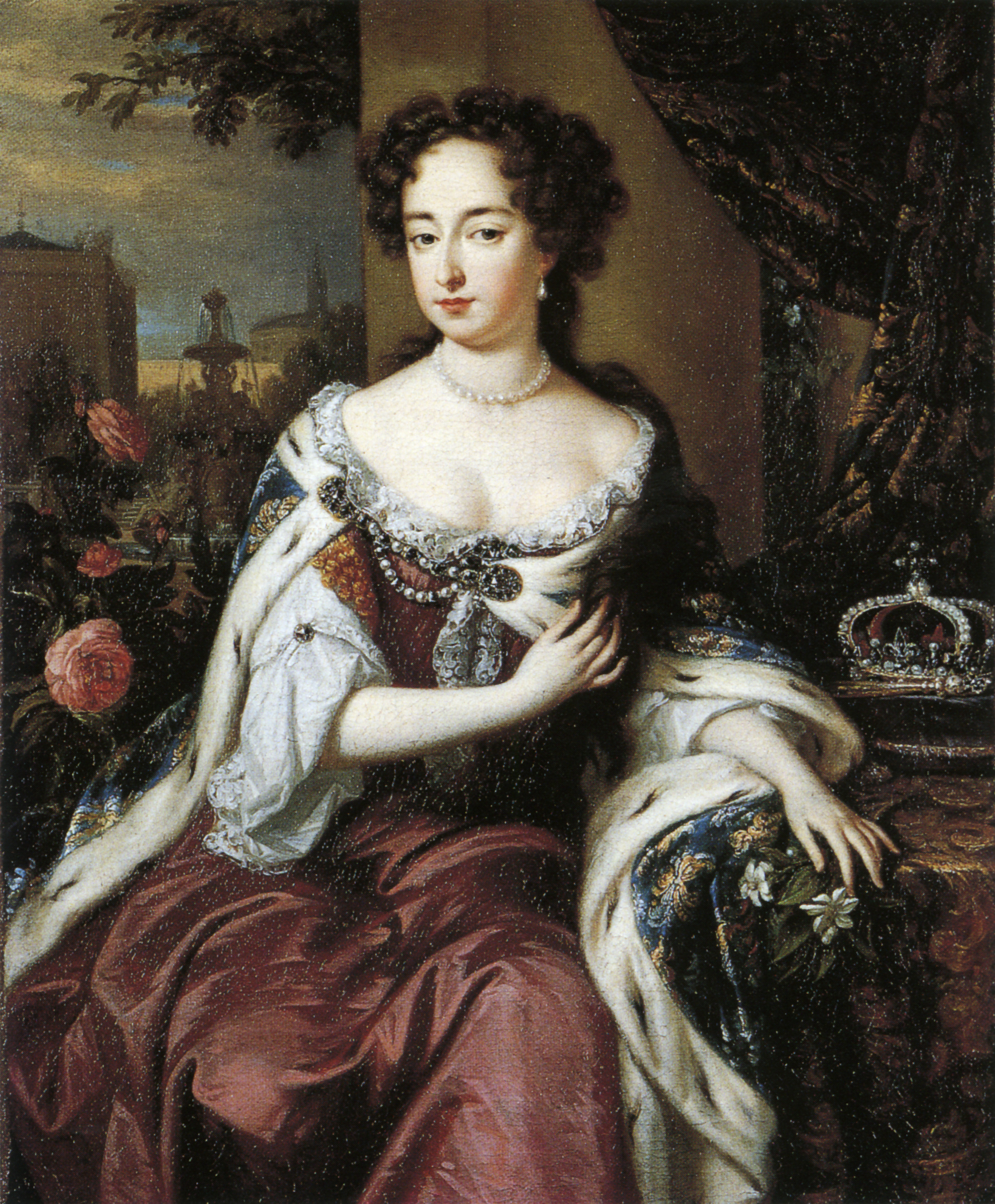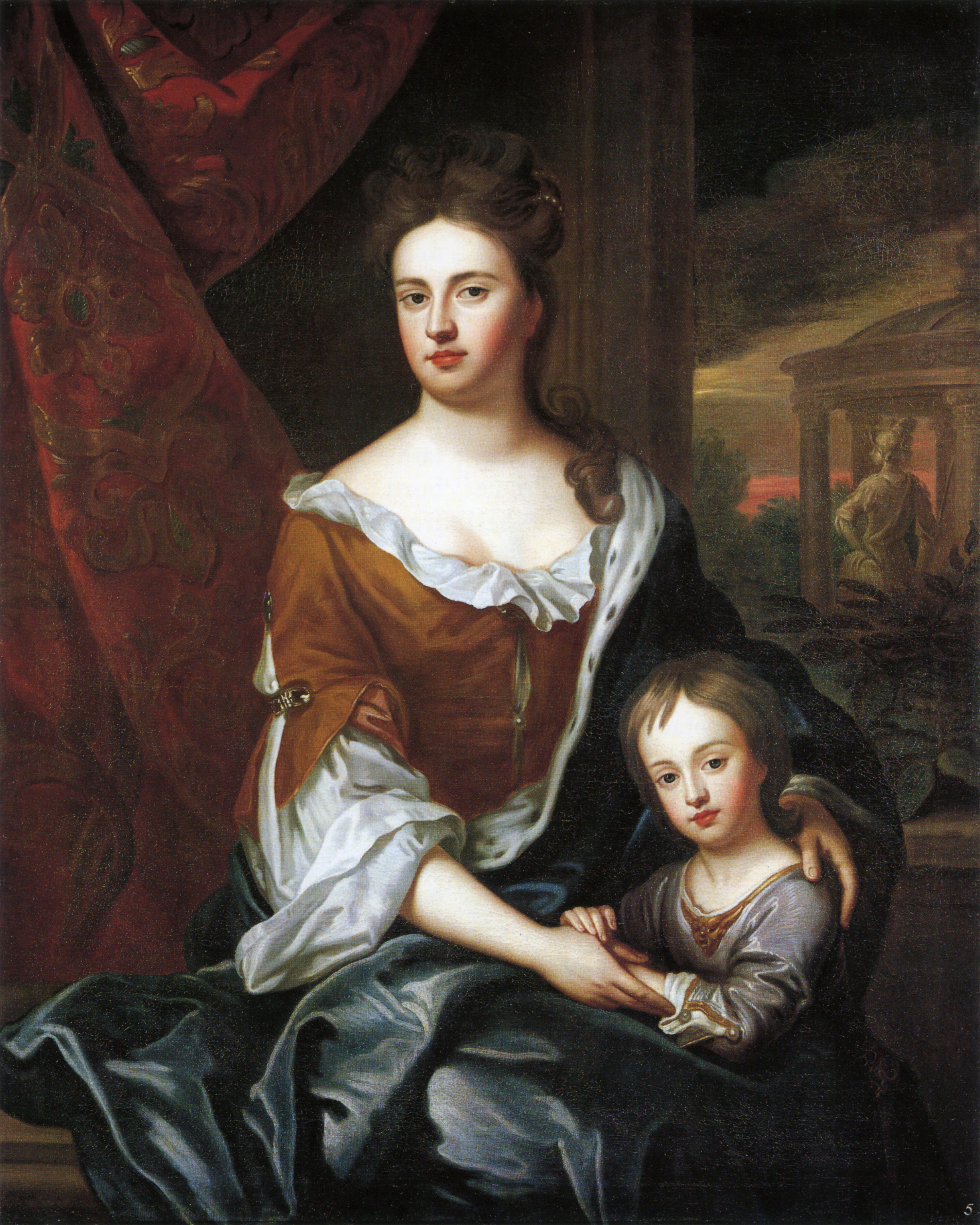 |
James with his first wife and their daughters,
Mary and Anne, in happier times
|
Such was the case when James Duke of York, heir to his brother, King Charles II, married Mary Beatrice of Modena in 1673. Just 15 years old, the Italian princess had been chosen specifically to help the Duke father legitimate, Catholic sons to inherit the English throne. Although the 40-year-old bridegroom wrote his 11-year-old daughter Mary, that he had provided a “playfellow for her,” Mary and her eight-year-old sister Anne could hardly have been enthusiastic about this new member of the family.
Having been restored to the throne following a bloody Civil War (in which Charles’ and James’ father had been beheaded), the royal family’s role in England was hardly stable—rocked as it still was by the religious turmoil between Protestants and Catholics initiated by Henry VIII more than a century earlier. The family was outwardly and officially Protestant, but well-founded rumors abounded that both the king and his brother were secret Catholics. The English were clear, however, that they did not want a Catholic king. So, the royal family presented a Protestant front. Having no legitimate heirs of his own (although much of today’s British aristocracy is descended from his many illegitimate children), Charles II wisely decided to have his brother’s daughters raised as Protestants, diligently tutored by the Bishop of London.
 |
| Mary |
For the next couple of years, the second wife had no more pregnancies and it seemed that the childless Princess Mary would be queen, followed by the very fertile Princess Anne, who was conceiving at least one child a year, although only two, Princess Marie and Princess Anne Sophia, had been born alive.
George recovered slowly and the couple once again found that they were expecting. Then, after years of waiting, Anne’s stepmother announced that she also was pregnant—the hoped-for male heir would supplant Anne and her sister in the line of succession. Anne gave birth prematurely to a dead son in late October. Distraught as she was over the deep, personal losses she had suffered in such a short period, she was highly mistrustful of her stepmother.
| Mary of Modena and young James |
She wasn’t the only one who found an excuse to stay away. Even though they were entitled to attend the queen’s delivery, scarcely any Protestant nobles and officials came. The large attendance of Catholics only helped spur the wild rumor that the new prince was actually an impostor, brought into the room in a warming pan and foisted on the nation as a threat to Protestantism.
 |
| Anne and William |
Here's something more about the plight of Queen Anne: Although her son William was born alive, he was not exactly healthy. He suffered developmental delays, taking longer than the average to walk or talk. He eventually proved to be quite bright and was a companion to his uncle/cousin, King William III. Soon after his eleventh birthday, however, William became ill, possibly with small pox, and died. An autopsy revealed that he suffered from hydrocephalus.
ReplyDeleteHis mother had several more unsuccessful pregnancies--18 in total including a set of stillborn twins for 19 children in all. When her sister, Queen Mary died, King William continued to reign alone until his death in 1702. With no heirs of her body, no non-Catholic siblings still living and her only legitimate first cousin (King William) also dead, the English decided to skip over several dozen Catholic relatives to settle the throne on the descendants of Electress Sophia of Hanover, a granddaughter of King James I. Her son became George I.
An interesting (to me any way!) bit that I just realized is that more than 200 years later, Queen Elizabeth II's uncle, Henry Duke of Gloucester named his first son, Prince William of Gloucester. That Prince William, a contemporary of Prince Charles, died in an airplane accident in the 1970s. Had he lived he would have eventually been William Duke of Gloucester. Perhaps his parents should have thought of the previous William Duke of Gloucester when they named him. One last tidbit: some speculate that Charles and Diana's son, William, was named for that unfortunate cousin. So, I hope the name isn't really bad luck.
Cheers, Cheryl
I think Queen Anne was a major hater, but misery does love company. ;-D Was it ever discovered why she had such bad luck with conceiving and with bringing up children? It seems to be the ultimate divine karma to me.
ReplyDeleteThanks for your comment, Jarmea! I have to say I've never really looked at it that way. I've always taken Anne and Mary's perspective. However, I was not aware of how nasty Anne was in criticizing her step-mother until I did the research for this post. I can certainly see your point!
ReplyDeleteAs for why Anne was so unsuccessful at having healthy children, I think we should first remember that infant mortality was extremely high in this time period. By delivering as many live children as she did, she actually fared well among members of her own family. Her sister (Queen Mary) and their aunt (Charles II's wife, Catherine of Braganza) had only miscarriages or stillbirths. She and her sister were the only two of their mother's eight children to survive past the age of three. Even Anne's despised stepmother, Mary Beatrice of Modena, only had two children (James, the 'warming-pan' baby, and his younger sister, Louisa) survive out of the 12 that she gave birth to.
Having said that, some scholars speculate that Anne's father had contracted syphilis as a young man and that this condition impacted the fertility of his two elder daughters (their half-sister Louisa died unmarried at 19). If he had syphilis, this might also explain why 16 of the children born to his two wives did not survive early childhood.
Finally, another theory raised recently is that Anne suffered from porphyria, a genetic hepatic disorder that many scholars today believe existed in the British royal family, most notably in Anne's distant cousin, King George III whose 'madness' may have been caused by the condition. If Anne suffered from this condition, it might help explain her perpetually poor health. However, I don't know enough about her various health complaints, to make my own assumption.